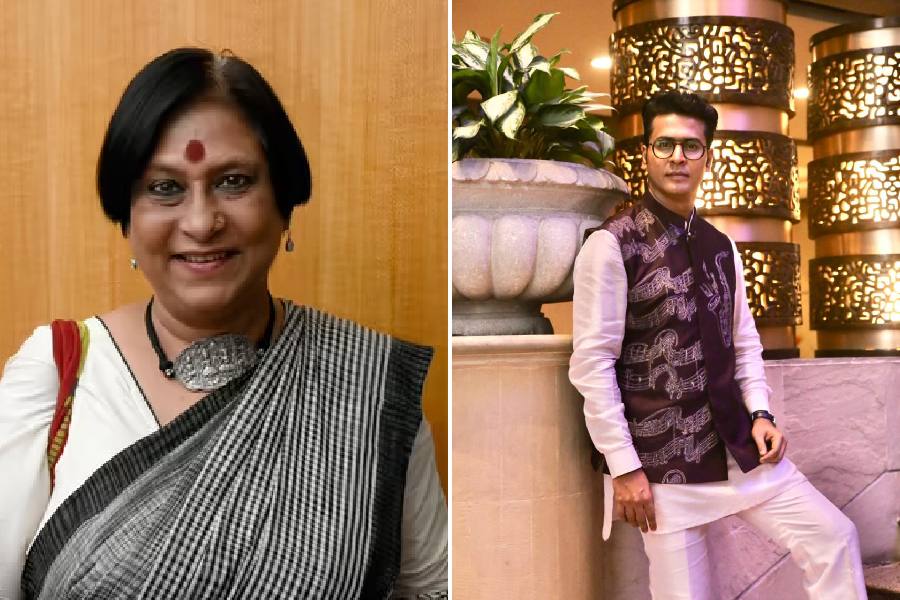 |
The bubble refused to burst. Actor Abir Chatterjee could accomplish his mission with a toy pistol only after three tries. Confetti cascaded out of the balloon and scattered all over the floor as it exploded. Minuscule images used in the artwork on show was turned into confetti.
The Non-Veg Art Show that opened on Wednesday evening at Maya Art Space in Rajdanga in the Kasba area is all about the synthetic world created by the media that passes for the real thing, and how it is marginalising reality itself. The participants are all media professionals themselves — Nilanjan Das and Anirban Ghosh are artists from Calcutta, and the burly Bandeep Singh is a photographer. Nilanjan and Bandeep work in Delhi.
Globalisation has undoubtedly changed our healthy food habits for good, and Nilanjan Das’s highly glossy and slick work imitates what it mocks, attacking the “enemy” with the weapons used by the enemy itself. His portraits of humongous human heads are composed of tiny images associated with fast food that has marginalised home-cooked Indian food — even street food like jhal moori — to such an extent that it is being served up in fancy restaurants with exotic names and ingredients.
With bright colours and forms borrowed from advertisements, these digital prints on canvas and drawings on white dinner plates are very pop in their eye-catching finish.
Graphic artist Anirban Ghosh mentions Hutom Penchar Naksha in his statement. He takes a dig at the virtual (in more ways than one) world that the media creates through his installations and prints. A black dresser complete with shining tungsten bulbs, the kind often seen in greenrooms, and plastic mirrors is a prop he uses in his installation. Toy birds that glow with electric bulbs shining inside them are arranged on the desktop, while concealed on both sides are some calendar pictures of our national icons. Cutouts of Bollywood stars enjoy higher visibility. Night turns into day here, as it often does in the world of advertisements and cinema. His digital prints of images associated with the electronic media and celebrities are displayed like luxury products, framed as they are in gold.
Bandeep Singh’s classic black-and-white photographs of nudes stand out against the trendy works of the other two participants. He calls the series Dupatta as the contours of the female body are observed in part through the haze of a veil. These silver gelatin prints are superbly detailed. The porous skin texture and the crinkled gauze are studies in contrast.











